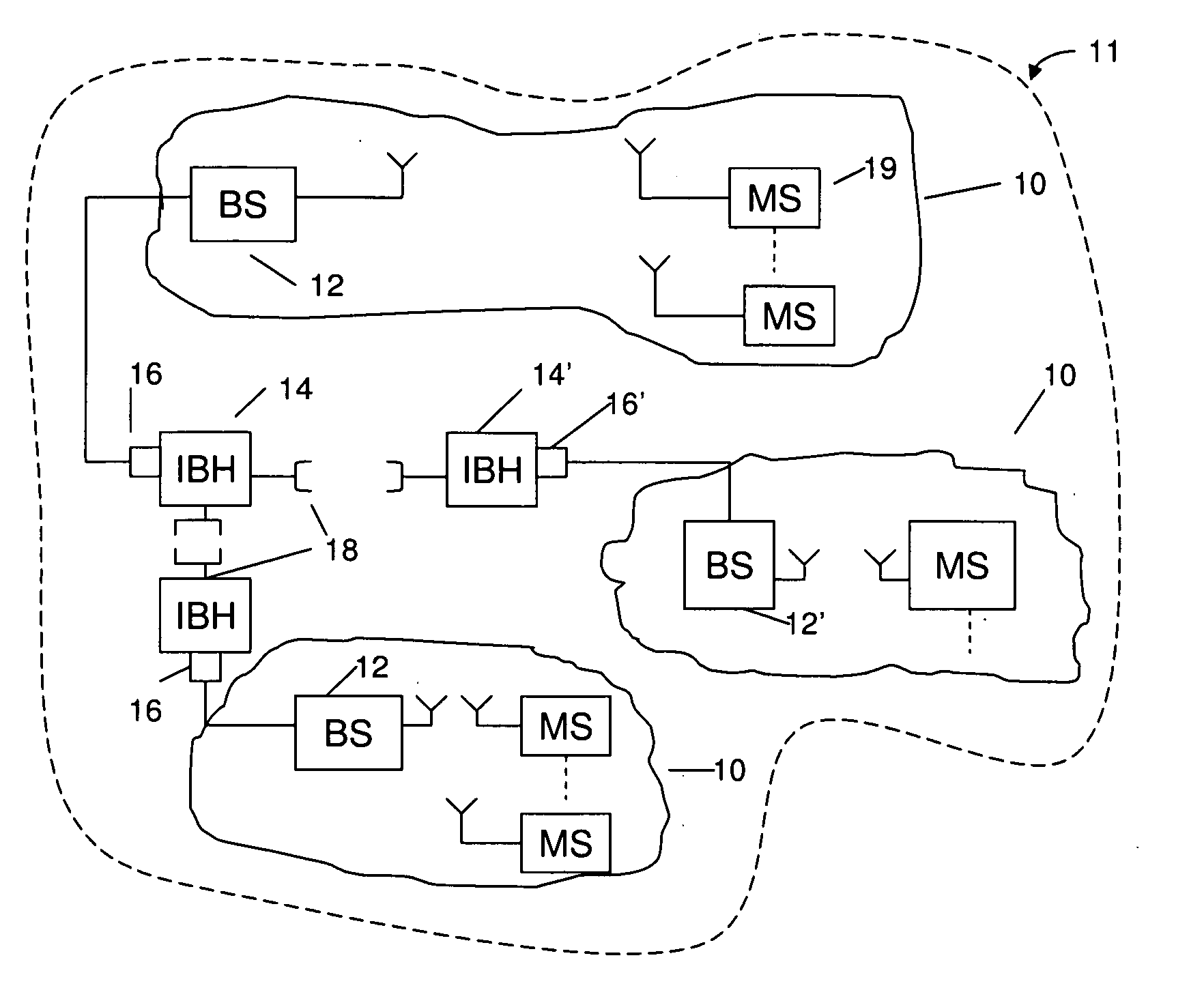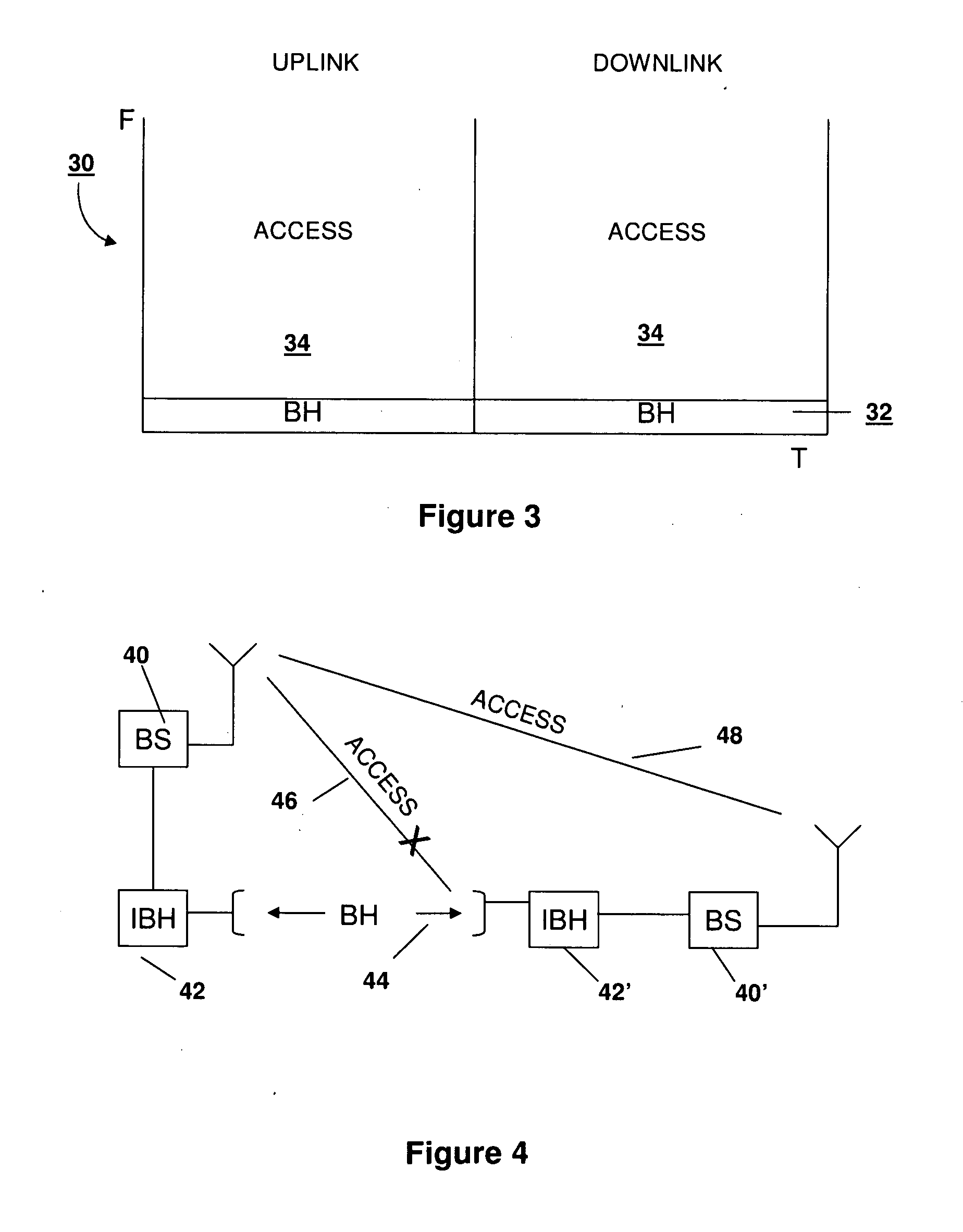Wireless backhaul
a backhaul and wireless technology, applied in the field of communication networks, can solve the problems of high operator cost, wasting the important resource of spectrum, expensive deployment, and high equipment and installation cos
- Summary
- Abstract
- Description
- Claims
- Application Information
AI Technical Summary
Benefits of technology
Problems solved by technology
Method used
Image
Examples
Embodiment Construction
[0017]The present invention relates to wireless Radio Access Networks (RAN), particularly mobile broadband networks, including but not limited to 3GPP-LTE®, 3G, 3G-HSDPA, HSUPA, conventional WiMAX® and other cellular technologies, having a plurality of access point nodes with a separate, conventional out-of-band backhaul network between the access point nodes and a core network, in which it is desired to provide backhaul, particularly in-band backhaul, between the access point nodes and possibly between the core and access point nodes. This is made possible by adding to the network a separate in-band backhaul unit coupled to the access base station for transmission and reception of the access base station's backhaul. Preferably, the in-band backhaul unit is fully synchronized with the access transceiver to which it is coupled and whose backhaul it transmits. According to the current invention, the same frequency band that, prior to the current invention, was used for radio access co...
PUM
 Login to View More
Login to View More Abstract
Description
Claims
Application Information
 Login to View More
Login to View More - R&D
- Intellectual Property
- Life Sciences
- Materials
- Tech Scout
- Unparalleled Data Quality
- Higher Quality Content
- 60% Fewer Hallucinations
Browse by: Latest US Patents, China's latest patents, Technical Efficacy Thesaurus, Application Domain, Technology Topic, Popular Technical Reports.
© 2025 PatSnap. All rights reserved.Legal|Privacy policy|Modern Slavery Act Transparency Statement|Sitemap|About US| Contact US: help@patsnap.com



